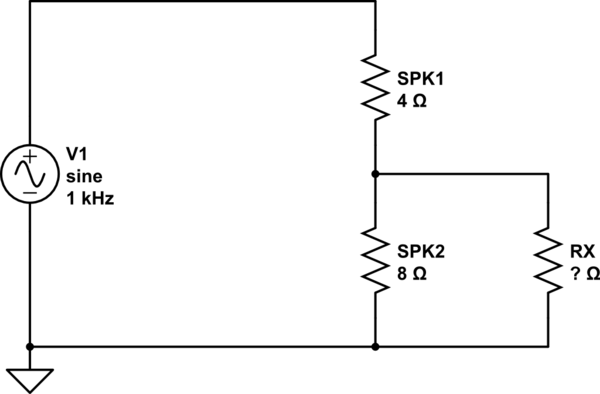When wired in series the same current flows through both speakers. Power = current2 x resistance, so the 8 Ohm speaker will get twice as much power as the 4 Ohm speaker. The human ear's response is logarithmic so this will sound like the 8 Ohm speaker is abut 40% louder.
To make them draw equal power you can put a resistor in parallel with the 8 Ohm speaker. This will reduce voltage and current in the 8 Ohm speaker, and increase voltage and current in the 4 Ohm speaker.

simulate this circuit – Schematic created using CircuitLab
The resistor value is tricky to calculate because it involves solving two simultaneous equations. I cheated and used LTspice with a voltage controlled resistance to simulate a resistance from 1 to 40 Ohms. The speakers got equal power at ~19.3 Ohms. A standard value of 18 or 22 Ohms should be close enough.
In the graph below Green is power in the 4 Ohm speaker, Red is power in the 8 Ohm speaker, and Blue is power in the resistor. The horizontal axis represents the variable resistance.

The power dissipated by the resistor depends on the amplifier's rated output power and load impedance, but is about half the power that the speakers have to handle. If the amplifier was rated for 3W into an 8Ω load then (at maximum output) it would put ~1.1W into each speaker and 0.5W into the resistor. For a different amplifier power rating (into 8Ω) scale accordingly. For safety you should rate the resistor for about double the expected power dissipation, ie. 1W in this example.
Note that real speakers are not prefect resistances and different speakers may have different impedance curves (depending on diameter, cone stiffness etc.) so they may not sound equally load at all frequencies. The speakers may also have different efficiencies which could make one sound louder than the other, so you might need to experiment with different resistor values to get the best balance.



